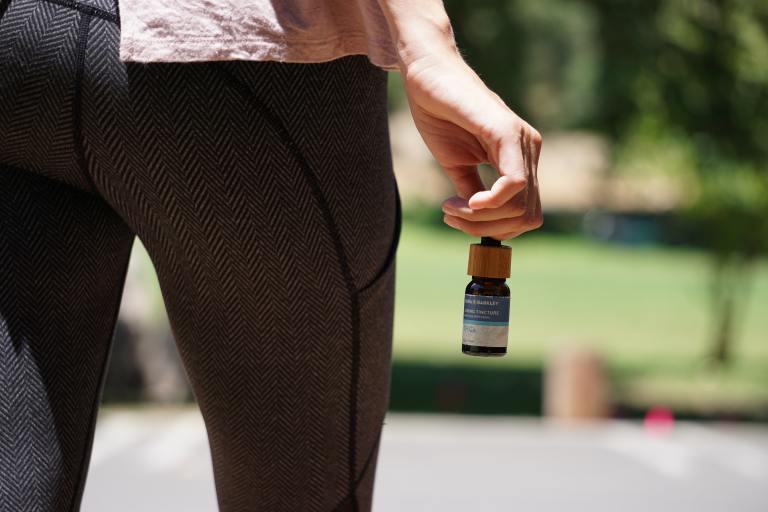This Is What Happens To Your Brain When You Take Each Of These Different Drugs
While meth and cocaine sound like they're similar, the key difference is that meth's effects last much, much longer. While the high of cocaine will last for only a couple minutes, the rush of meth can last for up to half an hour and the high that follows can last anywhere between four and 16…
By ![]() Katie Mather
Katie Mather

Caffeine
Adenosine is a naturally occurring chemical found in the brain and body that makes us sleepy. Caffeine is structured in a very similar way to adenosine, so when we consume it, caffeine binds to the adenosine receptors in our brain and prevents adenosine from binding, so that we don’t feel tired.
Caffeine also amps up the adrenaline supply in our bodies — boosting heart rates, pumping blood, and opening up different airways. It also stops dopamine from getting reabsorbed into your system, which means that the dopamine (which is responsible for us experiencing happiness) stays in your brain longer and makes you feel good. This dopamine effect is also why caffeine can easily become so addictive — which is problematic because the more caffeine you drink regularly, the more adenosine receptors develop in your brain, which then requires you to consume even more caffeine to feel more awake.
Because caffeine narrows the blood vessels to create the dopamine effect in your brain, when you stop consuming caffeine, those blood vessels have to expand again. This is what causes caffeine headaches.
Cocaine
No matter how cocaine is initially ingested, it will immediately travel through the bloodstream and hit the brain within a couple of seconds. The main effect of cocaine is euphoria — cocaine sets off reactions in the brain that are similar to what happens when you accomplish something or are rewarded. This is also why cocaine gives a false sense of grandiose or superiority to users, because it tricks the brain into thinking you’re experiencing real success.
Cocaine also activates an area of the brain that forms memories — which means that this part of the brain lights up when you experience the cocaine high and then remembers the place, people, and entire experience of doing the drug as a “happy memory.” This is usually why seeing the people you did cocaine with or being near the place where you did cocaine can trigger an impulse desire to do it again.
Although this hasn’t been proven in humans yet, studies with lab mice (which have a very similarly structured brain system to ours, albeit less complicated) have concluded that repeated exposure to cocaine impacts the prefrontal cortex of the brain (which is the area that helps with decision-making and inhibition), which means that the more times the mice got the drug, the more likely they were to take it again and again anytime they were given the option to. In one study, when given the choice, lab mice chose cocaine over food repeatedly until they starved to death.
Alcohol
Heavy alcohol consumption interferes with the hippocampus, an area of the brain that’s responsible for learning and memory. What happens is that once alcohol enters your bloodstream, it slows down and sometimes even stops the signals the hippocampus sends out, preventing certain neurons in the brain from communicating with each other effectively. This then temporarily disrupts the brain’s ability to create new memories, AKA a blackout. While your brain is still functioning even if you’re blacked out (you can still talk, send drunk texts, etc), your brain just can’t form any memory of what’s going on.
Studies have also shown that the more drinks you consume in a night — especially if you’re binge-drinking — the harder it is for you to complete even the simplest tasks. Alcohol shuts down certain parts of the brain that are necessary in making any kind of decision or completing any kind of simple task, so for a drunk person to do the same menial task as a sober person, signals from different areas of the brain that usually wouldn’t be involved have to come in and help.
Marijuana
Marijuana plants produce a series of chemical compounds (called cannabinoids), two of which are called delta-9-tetrahydrocannabinol (THC) and cannabidiol (CBD). THC is the psychoactive compound and is the reason why you feel high (the more THC you’re smoking, the higher you feel) and it significantly increases dopamine levels in your brain. It also tends to make you more sensitive to sound and hunger. CBD, which doesn’t have psychoactive side effects like THC, has been found to reduce pain and helps you feel more relaxed physically (think medical marijuana).
So, naturally, when we experience anything painful (muscle pain, inflammation, stress, fears, mood swings), our body releases a neurotransmitter called an endocannabinoid, which is sent out to help alleviate the pain. Basically, when you smoke weed, you’re ingesting THC and CBD (which, remember, are cannabinoids themselves), which then latch onto to the cannabinoid receptors that are already naturally in your brain (because they’re receiving the endocannabinoids anyway) and boost these signals significantly to help you relax. These cannabinoid receptors are located in the area of your brain associated with learning, memory, anxiety, pain, and movement control, which is why marijuana effects can range from something like an immense feeling of relaxation to mental fogginess to clumsiness.
The reason why some people get really paranoid after smoking weed, despite the fact that it’s supposed to help alleviate anxiety in the first place, is because you have no control over whether the THC cannabinoid will overexcite or relax the amygdala — which is the part of the brain that processes and controls emotional reactions like fear and paranoia. While THC usually has a relaxing effect on the brain, if it overwhelms the pathways within this part of the brain (AKA if you smoke too much at once or eat too much of an edible), you’ll experience feelings of heightened and irrational paranoia and stress.
Magic Mushrooms
The psychoactive ingredient in magic mushrooms is called psilocybin. Psilocybin can be naturally found in over 180 different species of mushrooms and, once ingested, it impacts activity throughout the brain — especially in suppressing the activity happening in the ego and “sense of self” part of the brain. This is why shrooms have significant antidepressant and calming quality.
What’s weird about this is that psilocybin isn’t only suppressing that part of the brain or just shooting signals throughout different parts of your brain, it’s literally creating new pathways — this is why some people claim to hear colors or see sounds, etc. while on shrooms. It’s generating very organized and heavily-trafficked pathways for information to be shared across your brain — the only issue is, psilocybin (as of now) can’t necessarily be controlled by the user, which is why sometimes people experience painful and scary hallucinations.
Meth
Methamphetamine (Meth) is a central nervous system stimulant and it increases levels of the chemicals in your brain that produce pleasure. No matter how meth is ingested, once it hits the brain, massive amounts of norepinephrine and dopamine are released. During the initial “rush,” your heart rate and blood pressure will increase, followed by the high — during which you’ll feel delusional effects like superiority, grandiosity, immortality (which is very dangerous). You also become laser focused on everything, which is why meth users obsessively fixate on picking at their skin.
While the effects sound similar to cocaine use, the crucial difference between cocaine and meth is that meth’s effects last much longer. While the high of cocaine can last for only a couple minutes, the rush of meth can last for up to 30 minutes and the high that follows can last anywhere between four and 16 hours.
Repeated meth usage can kill functionality in a variety of brain areas, including the hippocampus (memory and learning), striatum (movement and attention), the parietal cortex (nonverbal memories, imagination), frontal and prefrontal cortex (cognition, reasoning, attention, problem-solving, inhibition), and the cerebellum (movement, cognitive functions).
Ecstasy
Once MDMA is in your bloodstream and hits your brain, it immediately begins increasing your levels of serotonin (regulates anxiety, happiness, mood, sleep, and appetite), dopamine (helps with the brain’s reward and pleasure centers; regulates emotional responses), and norepinephrinee (a stress hormone). The effects are similar to other stimulants and hallucinogens and trick the brain into producing false feelings of heightened energy, pleasure, and emotional warmth. It also can completely distort your senses (this is why certain things “feel” really good when you’re on MDMA) and time perception.
However, because MDMA releases such a huge amount of serotonin at once, it also lowers the amount of serotonin in the brain days after the high is finished — which is why people usually experience depressive episodes several days after taking the drug. ![]()





